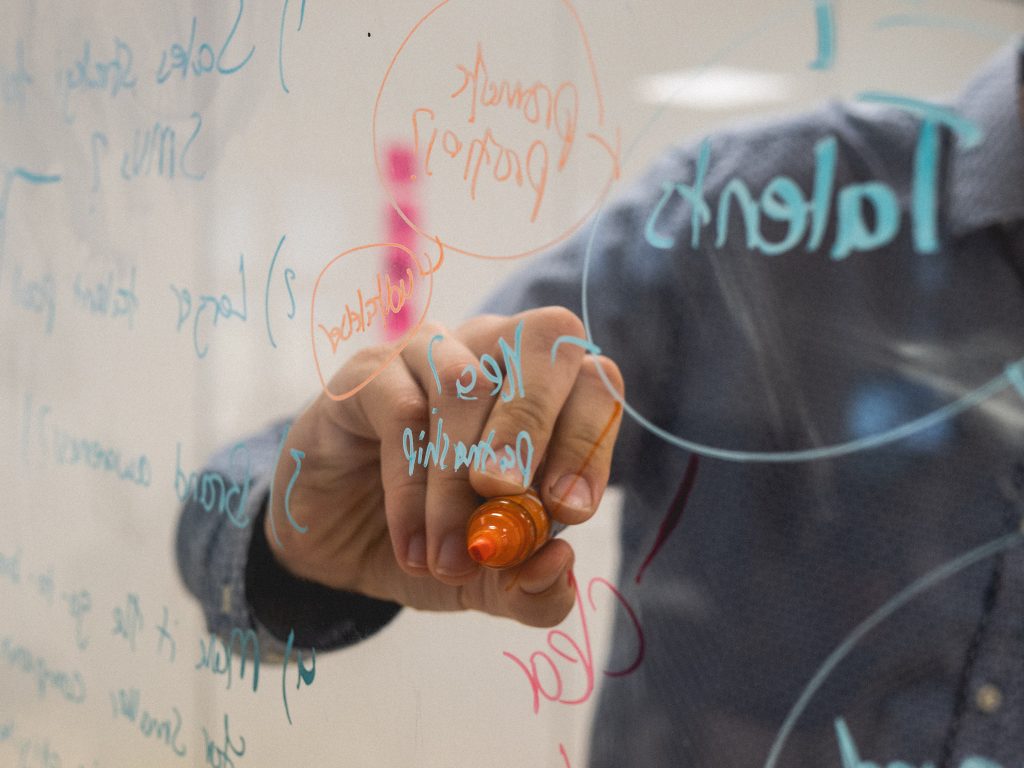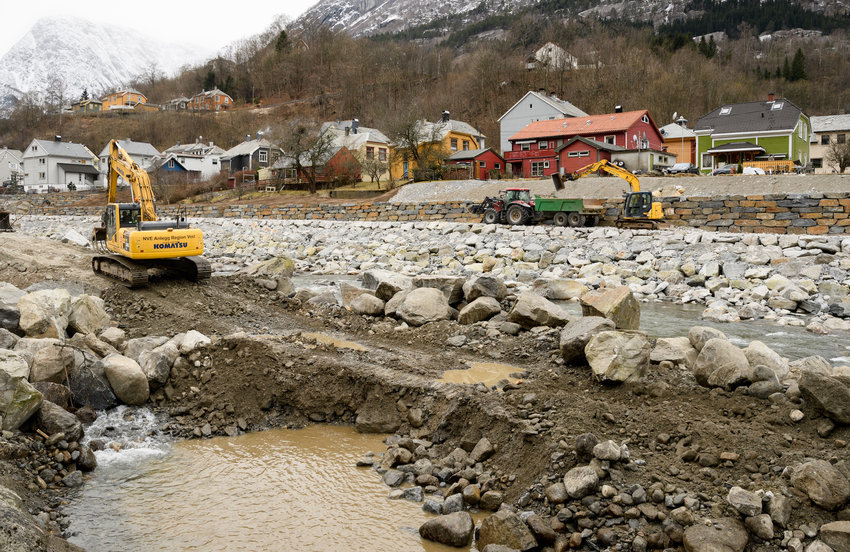Climate Futures is a centre for research-based innovation. What does that really entail? How do we work innovatively, and what does it mean that innovation is research-based?

The Term Innovation
When you hear the word innovation, you might think of young entrepreneurs in their garage in the USA, heading for Silicon Valley. But is this the only way to do innovation?
One typically makes the distinction between radical and discrete innovation. The words themselves reveal what they mean to a certain extent, but in short, you either take big steps or small steps to achieve the same result – something new and original. The Silicon Valley example is often what is called radical innovation. Discrete innovation, however, is about taking smaller steps, putting well-known components together in a new way to create a new product or service.
– You don’t decide in advance if you want to do discrete or radical innovation, but many of the things that we do will probably mainly involve improving or continuing to develop things that are smarter, more sustainable and can make more money, says Øyvind Paasche, Head of Innovation in Climate Futures.
What Does it Mean that Innovation Is Research-based?
Climate is a fundamentally complex field, and demands a profound understanding to know what does and does not work, and which correlations exist. To navigate in such a complex field to come up with new solutions you depend on a good understanding of science and previous research, according to Paasche. A lot of what Climate Futures does builds upon many years of research.
– Doing something new and thinking originally is actually a core activity in all research, so innovation is in many ways a natural part of the research field. What stands out in our centre is that it is applied.
Another important part of the term research-based is that we also do research within the centre and publish what we find out so it is publically available. That way, we contribute to the research field through innovation as well.
Innovative Work Structure
Paasche also emphasises that the way we work in Climate Futures is unique.
– The way we work is also quite innovative. There are few others who work with seasonal/climate/weather forecasting and a broad spectre of stakeholders to come up with new ways to handle and apply them.
Innovation and research are closely connected. Climate Futures’ approach is to facilitate a space where research- and user partners together can identify issues that demand particular solutions. Whether or not we are on the right track thus depends on our ability to identify the right goals. For now, this is what we are doing in the preliminary phase, but the centre also has a more long-term goal.
– We might get to a point where we see that a method or an idea is so smart that we should not only implement it with our partners but also make it a spin-off in itself. Maybe we need to start a company and sell the idea. We are not there yet, but it is a kind of long-term goal, Paasche reveals.
In order for innovation to appear organically in the centre, we depend on mutual trust between partners. Without trust, it will be difficult to generate services and products that can be considered innovative.
It is also necessary to follow up on ideas that have potential for innovation. If we come up with a method or service that can be implemented, it is important to monitor, document and get feedback during the implementation phase, so we can document the effect of the services we develop.
– If we for example come up with a method for farmers to sow earlier or harvest later, we have to be able to document that it works. We have built trust between the stakeholders so they actually change behaviour based on the forecasts we send out. Despite the fact that we are still in an exploratory phase of the SFI and have barely existed for 2 years, we have a bunch of pilot projects that we are trying out, developing and testing, says the Head of Innovation.
What expectations do we have to contribute to innovation in Climate Futures? What concretely do we want to do that is innovative?
– Through our allocation, it is our mandate that we shall come up with solutions and services that will contribute to the green shift in Norway. We have identified four areas where we think we can contribute, says Paasche
The Head of Innovation is referring to the four nodes that Climate Futures is divided into – Sustainable Food Production, Renewable Energy, Smart Shipping and Resilient Societies.
– Within these, Climate Future wants to help develop optimal route options in the shipping sector and consider climatic factors that make them use less fuel and reduce emissions. In the energy sector, we want to develop products and services that enable hydropower companies to utilise their resources better and do damage prevention more optimally – for example, find out how offshore wind power can be harvested in a responsible way. We want agriculture and aquaculture that are prepared for climate change, and that find solutions that can exploit the weather changes in a better way. Within resilient societies, we are working with the insurance sector to improve the understanding of climate risk and how it affects pricing and damage prevention, which again can lead to better products adapted to a new climate reality, Paasche concludes.

